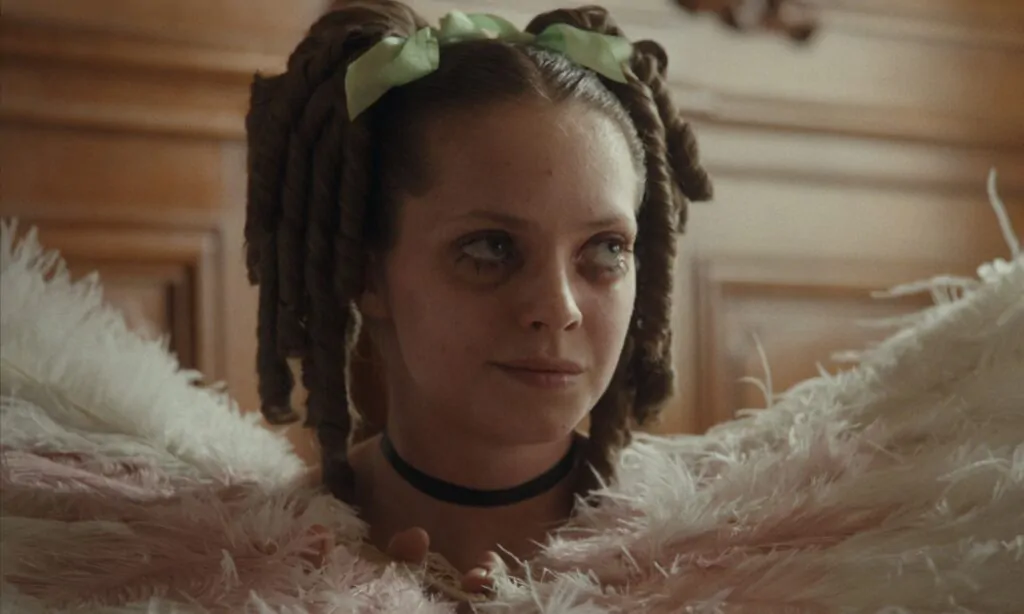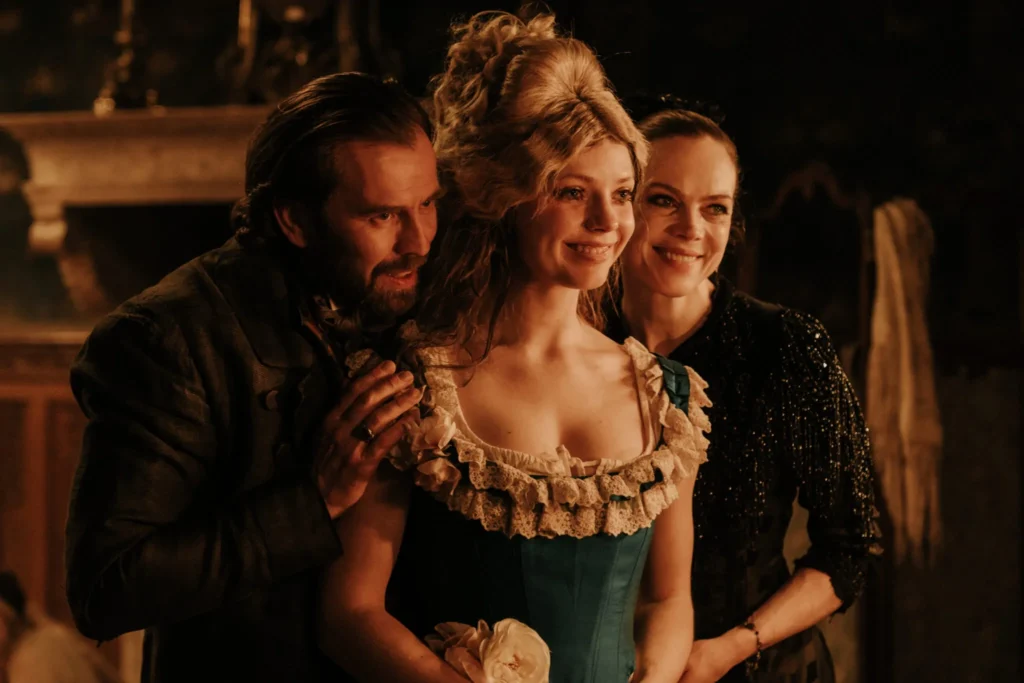In a culture enamored with transformation, The Ugly Stepsister takes the familiar fairy tale blueprint and distorts it beautifully, horrifically, and with razor-sharp intent. Directed with a knowing wink at the genre’s tropes and a gut-punch of psychological realism, the film is less a glow-up story and more an autopsy of one.
At the heart of the film is Elvira, a protagonist whose “ugliness” is more socially coded than literal. She enters the elite finishing school with a nose brace, curls that haven’t been brushed out, and the kind of unguarded vulnerability that quickly makes her a target. One could argue she’s not so much “unpretty” as she is unpolished—a blank slate in a world demanding mirrors.
We learn early on that her admission wasn’t earned but bought—her mother’s money, not merit, secures her spot. This transaction sets the stage for everything that follows. It’s not a fairy godmother who ushers Elvira into the next phase, but an overbearing mother who goes into debt to bankroll every procedure and manipulation. The message is chillingly clear: your value is an investment—one that must be paid in parts of yourself.

Aesthetic Terror and the Tapeworm Twist
As Elvira begins her transformation, the film leans into grotesque surrealism. False lashes are sewn into her eyelids. A tapeworm egg is consumed to maintain weight loss while still eating freely. It’s a perfect metaphor for the fantasy of effortless beauty—results without discipline, perfection without visible effort. The film doesn’t just suggest these practices are harmful; it makes you feel the slow horror of each one.
Director and production designer alike understand the power of symbolism. The sewn lashes suggest enforced beauty, the inability to close one’s eyes to the standards being imposed. The tapeworm—a choice rather than an accident—becomes a stand-in for the quick fix, the magic bullet, the cost-free miracle that always costs more than you expect.
Losing Hair, Losing Self
As the procedures mount, Elvira begins to lose her hair—a subtle but poignant turning point. Hair in cinema is often a shorthand for identity, power, and transition. In The Ugly Stepsister, it becomes a casualty of the makeover—a visible marker that the body is beginning to reject the lie.
The loss is quickly covered by a wig- a different color than her natural hair- like throwing a blanket over something broken instead of fixing it. It was hidden instead of grieved. This was the collapse of a girl who was never given the space to like herself before being told she had to change.


Echoes of Grimm: Chopping Toes, Fitting In
The film smartly echoes its source material—the Brothers Grimm version of Cinderella, where stepsisters famously cut off their heels and toes to fit into the slipper. In one of the movie’s most disturbing yet oddly understated sequences, Elvira mutilates herself to fit a shoe. It’s less about vanity, more about desperation. A literal sacrifice to the god of assimilation.
What makes this scene so effective is its allegorical spotlight on the panic of a girl willing to cut herself down to size—because she believes that’s the only way she’ll be chosen.
A Tragic Ending, Textbook Ugly
By the end of The Ugly Stepsister, Elvira is barely recognizable—not just to others, but to herself. In her pursuit of beauty, she’s left with a broken tooth, a broken nose, and no toes. She wasn’t deemed beautiful at the start, but now she’s mutilated by the very standards she tried to meet.
None of it was enough.
She gave everything—her body, her identity—and was still found lacking. Her unraveling isn’t transformation; it’s tragedy. Elvira becomes a haunting reflection of what happens when the world tells children to change before they’re ever given a chance to like themselves.

Final Verdict
The Ugly Stepsister is not an easy film to watch, and that’s the point. It’s an indictment of the way beauty is packaged, sold, and consumed—especially by those who were never meant to feel worthy in the first place. Its horror isn’t supernatural; it’s societal.
For viewers expecting a campy reimagining, be warned: this is not a fairytale, but a cautionary tale. And its slipper doesn’t sparkle—it binds.
